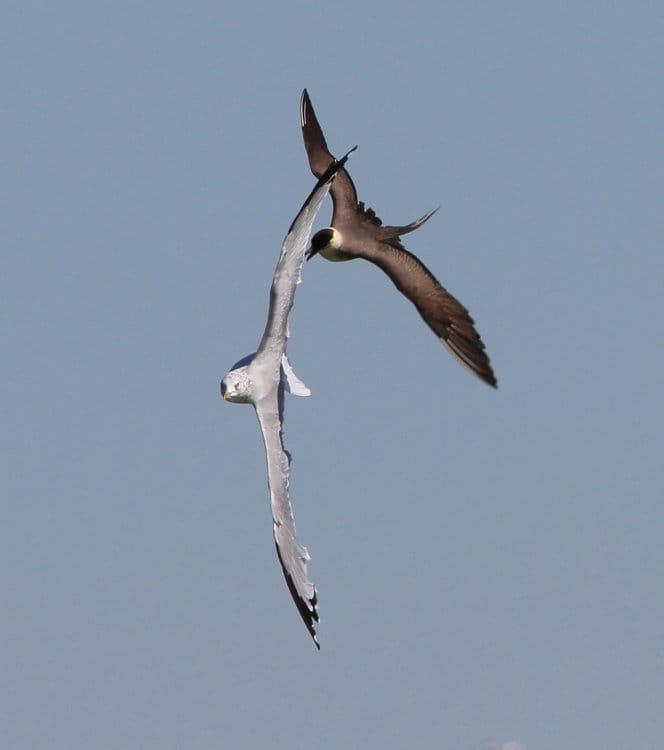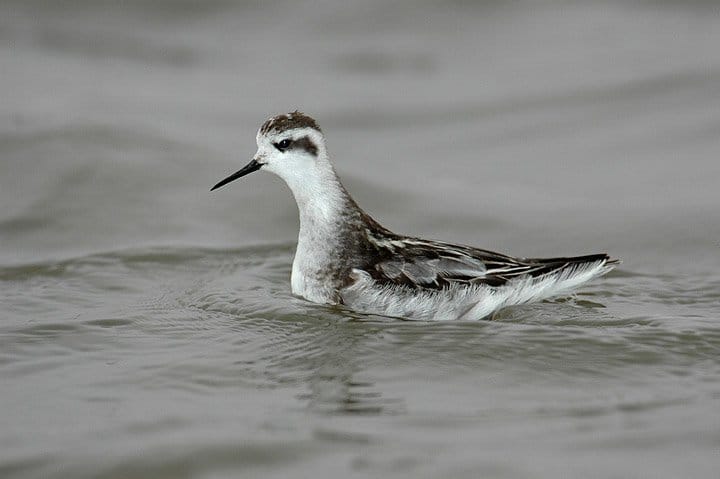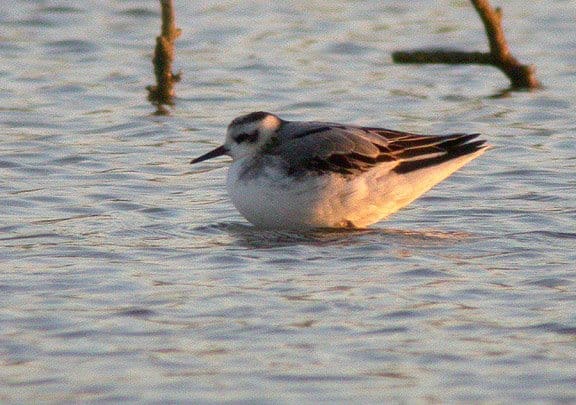You ever notice how rare bird alerts (RBA) differ from state to state? I travel much when working for Nikon and I certainly make it a point to check out what has been seen locally. After years of reading posts and rules from other listservs I have come to the conclusion that most are inconsistent and some are just nothing more than a loose forum. How come we call them RARE BIRD ALERTS? Doesn’t this constitute that when you post it should be something that the majority would consider RARE? I think so. However, I am just one opinion in a eclectic crowd of birders.
For example, recently, I wrote a blog post about a Long-tailed Jaeger that showed up on the Front Range of Colorado. This is considered a rare bird chiefly because it shows up so infrequently. Also, it is a highly sought after bird that many birders might like to see even if it is not a lifer.

Thanks to good friend and fellow gonzo birder, Glenn Walbek, he was able to provide this photo (among others) to the masses. I am going to use this example of the Jaeger with a fictional example. It is possible to see a post like this and then get someone talking about their Mountain Chickadee activity at their feeders. I am not saying this isn’t cool information in the right gallery, but since the Mountain Chickadee is a common resident bird in most of Colorado, it shouldn’t be on a RARE BIRD ALERT. I am also not saying this should be some elitist online society where only the best of the best post. I am saying that all posts should stick to the topic. I am the type of person that likes to be aware of the rare birds in my state immediately as someone posts. Thus, I get individual posts sent to my smart phone, but in doing this I have to delete dozens of posts a day that are not on point with the main objective.
I have joined a few and am involved in the main Colorado site. However, I noticed that certain rules apply. For example, no band codes are allowed and furthermore, you must put the county where the bird was seen in along with the site. This is okay for people in state, but what about out of staters who are reading the post. Now they are forced to search online further to find out where that county is because they don’t know and most certainly in cases where the out-of-state birder finds the rare bird. I have been in this position. How about for huge states like Texas or California. A rare bird seen in the Davis Mountains, TX doesn’t necessarily help someone birding in Harlingen, TX.
This is a huge country with huge states involved, but I must think there are better ways to organize these RBAs so they are not so scatter-brained. eBird has managed to organize a network of local experts to monitor their region. More and more people are using eBird and I think this will become the wave of the future as more people join this online society. At least with eBird you can look into trends locally and understand more about local migrational movements. I don’t claim to have any answers, but I do have questions and I often here people groan about the same topic of this post. Which is very odd because nobody wants to bring the problem to the surface.
As mentioned earlier, RBAs aren’t all bad. I wouldn’t have known about the latest influx of phalaropes in the state without someone posting. My local birding has been cut down due to time on the road and I am familiar with Red-necked Phalaropes as a common fall migrant. Lately, however, there have been a few Red Phalarope reports which would certainly be a uncommon bird at best in this season. So, I am off to Cherry Creek State Park to try and find one of these:
A Red Phalarope (photo taken by Bill Schmoker) which displays a thicker, more stout bill than the Red-necked and in full winter plumage would be clean, slate gray on the mantle.

This Red-necked Phalarope (photo taken by Bill Schmoker) shows the more delicate, longer bill and steeper forehead. One must also keep a close eye on the streaking on the mantle when separating these birds. Hopefully, luck is on my side. Coincidentally, Glenn Walbek posted on the Colorado RBA as I was writing this about a possible Red Phalarope at Cherry Creek State Park. So timely! So, I guess bottom line is that RBAs are great in circumstances but often have me rolling my eyes in the back of my head as well. Good Birding out there!













This is a tough situation to navigate. I know one of the RBA listservs here in Michigan has an actual list of birds you are and are not allowed to talk about. There’s a sister serv that is for general chat about any and all birds.
I hate to see people called out and beaten down for mentioning a hairy woodpecker on their suet on a birding listserv. Yes, it’s an annoyance for many of us, but this is obviously an inexperienced and enthusiastic birder – exactly the kind of spirit we don’t want to crush. I suppose my opinion is that life isn’t perfect and there are worse things than having to delete irrelevant bird alerts. I’d rather err on the side of having a cluttered RBA than run the risk of even just appearing to be that elitist society. I know more than a few people that won’t go on local Audubon walks (and probably not post on forums or servs) because there’s one or two bad apples that make the group feel elitist – whether it’s intentional or not. I got the nose-in-the-air treatment from a somewhat prominent birder at a prominently advertised birding location last week. Didn’t bother me at all, but I wonder if he treated a guy carrying thousands of dollars of optics that way how he treated the people that went there without even having binoculars because they heard something about cool birds. I suppose my opinion is that we need to be ambassadors for the hobby, and as such we’ll have to tolerate newbie mistakes, whether it’s showing up at a walk without bins or posting starling sightings on a listserv. Some gentle, private guidance and before long these people will be the ones rolling their eyes and smiling with us.
I want to second Kirby’s comments!
Utah does have one listserv dedicated to RBA’s, another listserv to talk about anything birds within very strict guidelines, and yet another listserv where pretty much anything goes. So, birders in Utah can have their pick. I personally subscribe to all three, but tend to enjoy the relaxed listserv most.
Our New York listservs, especially the state listserv, have awesome flame wars about what is and is not appropriate as a post topic. This has caused a second listserv to be formed for New York City birders that is only for rarities and is very strictly policed.
Of course, in New York we have an embarrassment of riches in terms of listservs with listservs serving New York City (2), Staten Island, the Hudson Valley, the Albany-area, northern New York, the Cayuga Lake basin, and western New York. And I think that I probably forgot at least one.
It seems that different listservs serving different purposes and rules, rules, rules are the “golden way” (as we say in German).
All listservs I’ve been a member of without strict guidelines and “policing” eventually failed. People either dropped out because of a “flood” of “irrelevant” emails or a “flood” of emails discussing what is irrelevant.
I don’t believe Cobirds is a “Rare Bird Alert”, which is probably why there are so many posts about things like Mountain Chickadees on there…
I’ve always been impressed with the Michigan model: one focused on “listable” birds, one just for birdtalk. I generally enjoy the relaxed, rules-free forums–though that said, I’ve just created a gmail ‘filter’ to delete all NJ reports of Ruby-throated Hummingbird until late October….
I’d second Andrew’s comment about COBIRDS and add this from CFO’s page: “COBirds is a free e-mail list for the discussion of Colorado birds…” For the several years I lived in CO, I really enjoyed the COBIRDS format. My impression was that at least 3/4 of the real zooties were being found by less than a dozen people statewide. Set up some kind of Twitter network with them, or at least Brandon Percival and Bill Schmoker, and I’ll bet you’d never miss a “good” bird in CO again.